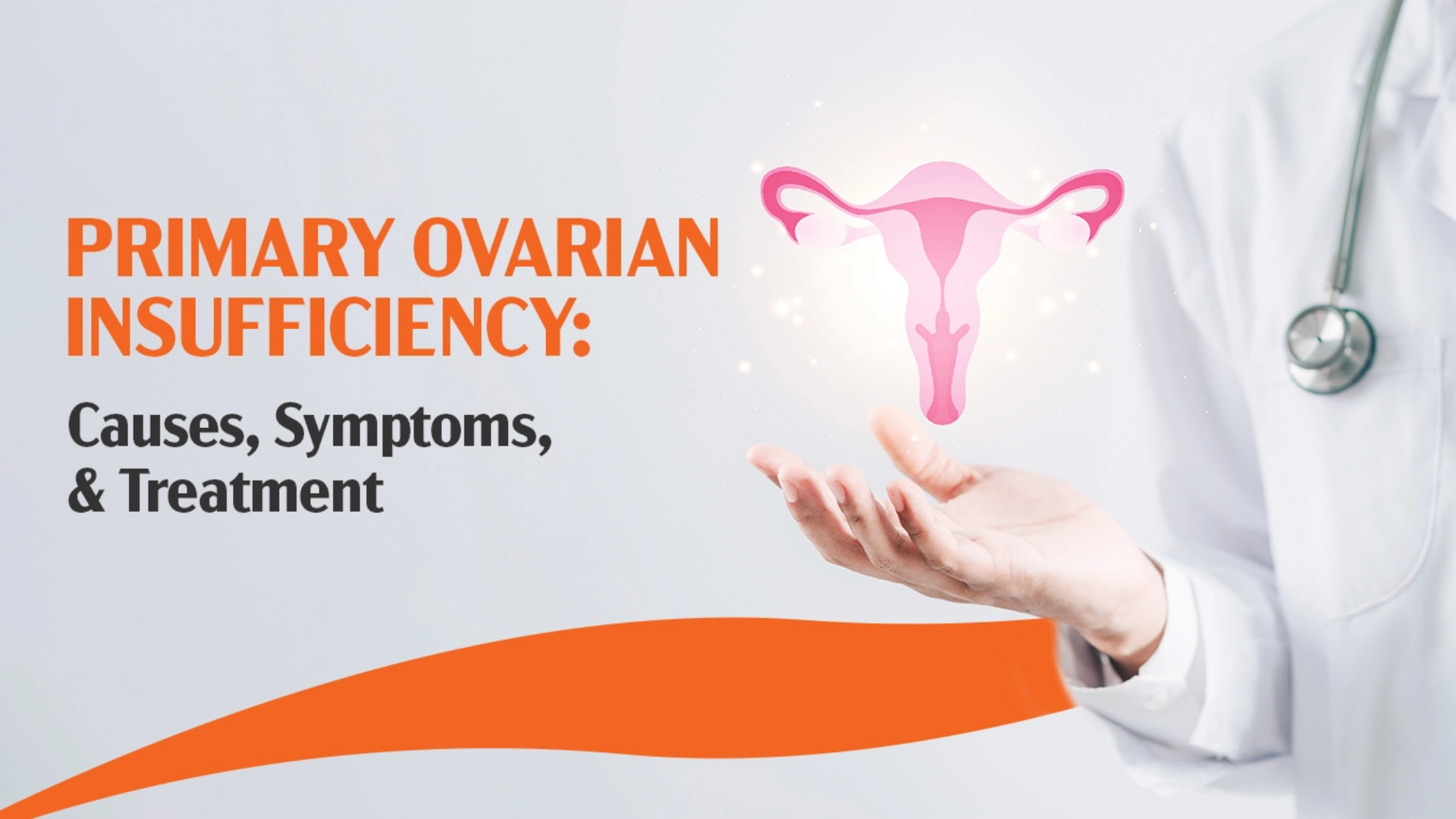Primary Ovarian Insufficiency (POI) is a relatively rare medical condition wherein a woman’s ovary becomes unusually inefficient in performing its most basic functions before the age of 40. Also known as Primary Ovarian Failure, this condition is recognized by an evident irregularity of menstrual cycles. In severe cases, these irregular periods often eventually lead to subsequent infertility.
Despite its rarity, Primary Ovarian Insufficiency is a condition that has its share of fairly viable treatment options. Among these, Hormone Therapy (HT) is a method that stands out as the most common one. Hormone Therapy is a restorative approach to Primary Ovarian Insufficiency that involves the administration of hormones into the affected person’s body. The hormones injected subsequently address the hormonal imbalances associated with Primary Ovarian Insufficiency.
Table of Content
1.0 What are the symptoms of Primary Ovarian Insufficiency?
2.0 What are the causes of Primary Ovarian Insufficiency?
3.0 What are the treatments available for Primary Ovarian Insufficiency?
4.0 Discover Personalized Fertility Solutions at Banker IVF, Ahmedabad
What are the symptoms of Primary Ovarian Insufficiency?
While the absence or irregularity of menstrual periods is usually looked at as one of the most common indicators of Primary Ovarian Deficiency, it’s important to note that, except a few subtle signs, a large number of individuals affected by this condition may not experience any conspicuous symptoms at all.
Other common symptoms of Primary Ovarian Deficiency include:
- Experiencing irregular or inconsistent menstrual cycles.
- Difficulty in achieving pregnancy.
- Experiencing an unusual reduction in libido.
- Experiencing challenges in maintaining focus and concentration.
- Heightened irritability.
- Dealing with dry eyes.
- Going through hot flashes and night sweats.
- Unusual vaginal dryness.
- Experiencing pain during sexual activity due to vaginal dryness.
What are the causes of Primary Ovarian Insufficiency?
The exact causative factor behind Primary Ovarian Deficiency often remains difficult to point at and the condition is therefore commonly also referred to as idiopathic – a disease or a condition that stems from an unknown cause. Despite the previously-stated uncertainty, research reveals that over 33.33% of cases of POI may be linked to a certain factor that might be hereditary in nature.
Other causes of Primary Ovarian Deficiency include:

1. Psychological Stress
High levels of stress – personal, professional or academic, and sleep problems are some of the most common signs of psychological stress found in women with POI. The latter thereby backs the idea that for a lot of people, adverse life events might contribute to the development of POI.
2. Autoimmune Factors
Autoimmune disorders including Addison’s disease, rheumatoid arthritis, or thyroid disease have been found to adversely affect a woman’s ovarian health. The causative factor behind the same is a certain disruption in the woman’s hormonal balance that might trigger irregularities in the menstrual cycle and, in some severe cases, even ovarian insufficiency.
3. Impact of Cancer Treatments
Cancer treatments, especially chemotherapy and radiation, tend to have a massive impact on a woman’s basic ovarian function. While essential in combating cancer, these treatments have the potential to cause ovarian insufficiency as a side effect.
4. Environmental Exposures
Prolonged exposure to various environmental factors, including chemicals, pesticides, cigarette smoke, and other toxins, is yet another factor that has been declared responsible for the disruption of ovarian function.
5. Genetic Influences
Genetic factors also tend to play a pivotal role in the development of Primary Ovarian Deficiency. Conditions such as Turner syndrome, generally characterised by abnormalities in one of the two X chromosomes in individuals assigned female at birth, and Fragile X syndrome, involving changes in the FMR1 gene, are associated with an increased risk of Primary Ovarian Deficiency.
6. Surgical Intervention
Hysterectomy is a surgical procedure that involves the removal of the uterus in individuals assigned female at birth. This surgical intervention has also been cited as a potential cause behind the development of Primary Ovarian Deficiency. The reason behind the same is quite simple: removal of the uterus tends to affect the otherwise normal blood flow to the ovaries, subsequently affecting their normal functioning.
7. Infection-Related Effects
Certain infections, including the likes of mumps and HIV, have additionally been linked to the development of Primary Ovarian Deficiency.
What are the treatments available for Primary Ovarian Insufficiency?
The journey of monitoring as well as treating Primary Ovarian Insufficiency is something that varies significantly from one individual to another, with numerous factors influencing their respective approaches. These contributing factors can range anywhere between the age of the person affected to their respective personal preferences vis-a-vis the idea of conception itself.
Research on the subject has additionally revealed that its treatment is usually aligned with the treatment of health issues or concerns that stem from estrogen deficiency. In addressing these issues, problems like osteoporosis are usually paid more attention to.
1. Estrogen Therapy
Estrogen therapy is a restorartive approach to POI that prevents osteoporosis, softens the impact of the symptoms of Primary Ovarian Insufficiency, and protects the uterus.
2. Calcium and Vitamin-D Supplements
Calcium and vitamin D supplements are credited as a significant factor that prevents osteoporosis. They are commonly recommended at 1,000 mg of calcium daily for women who are aged between 19-50. The prescribed intake increases to 1,200 mg for women who are 51 and older.
3. Hormone Replacement
Hormone replacement is another common treatment for POI where the condition is treated by substituting hormones that are no longer produced by a woman’s ovaries.
4. Symptom Management
Symptom management is an approach to POI where the symptoms or side effects of POI (night sweats, vaginal dryness) are treated individually so as to soften their individual impact.
5. Risk Reduction
This is an approach where lowering the risk of conditions associated with POI are prioritised while monitoring and treating the condition.
